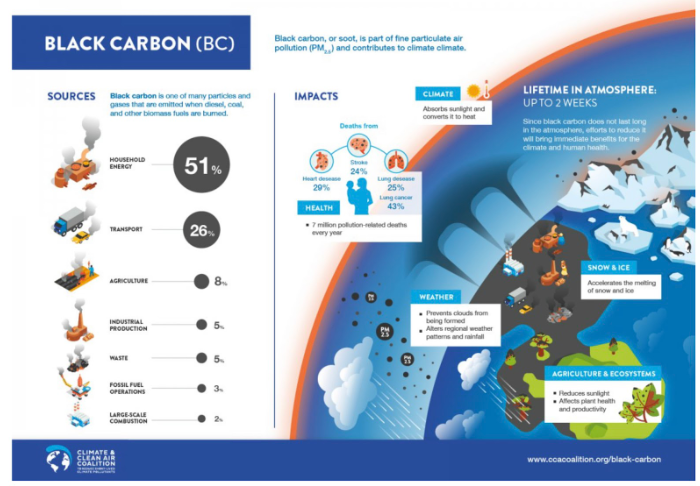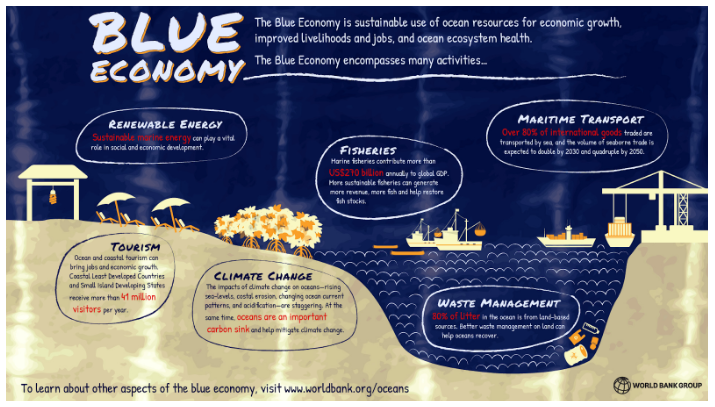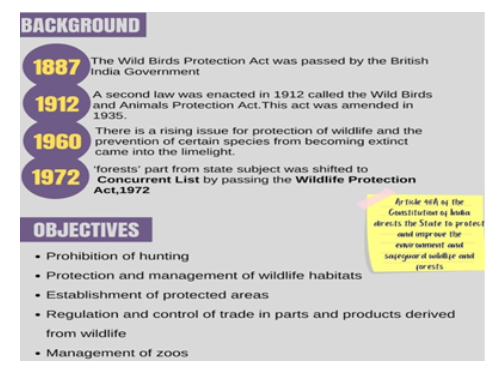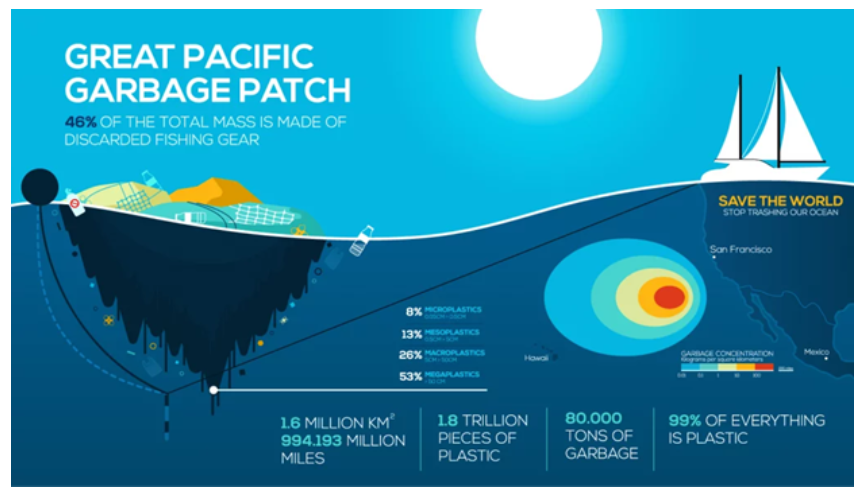10 Mar to 24 Mar, 2024
HUMAN ANIMAL CONFLICT
Why in news : Amid repeated deaths from animal attacks and rising anger over them, Kerala has declared the Human-Animal Conflict as a state-specific disaster.
About :
What is human-wildlife conflict?
- Human-wildlife conflict is defined as "any interaction between humans and wildlife that results in negative impacts on human social, economic or cultural life, on the conservation of wildlife populations, or on the environment.
What are the direct costs of human-wildlife conflict?
- Direct costs to humans are the financial, social and cultural losses suffered as a result of human-wildlife conflict. Examples include:
- Raiding and destruction of food crops
- Loss of income from sales of produce from cash crops
- Damage to water sources and installations
- Damage to stored produce
- Loss of livestock
Causes of Conflict Across the World
- Habitat Reduction and Degradation: In the Amazon, extensive deforestation has led to significant habitat loss for countless species. The World Wildlife Fund (WWF) reports that over 18 million acres of forest are lost annually, equivalent to 27 soccer fields every minute.
- Availability of Resources Outside Protected Areas: In Africa, elephants are known to leave protected areas to raid crops such as maize, which are richer in nutrients compared to their natural diet.
- Species Behavior and Social Dynamics: In Yellowstone National Park, the reintroduction of wolves has altered the behavior of certain species, leading to new dynamics between wildlife and human populations on the park boundaries.
- Human Socioeconomic Factors: In Madagascar, impoverished communities rely on hunting and forest resources for survival, leading to frequent encounters and conflicts with endemic species.
- Population Growth Pressures: The Global Human-Wildlife Conflict Toolkit reports that in areas with high rates of human population growth, such as sub-Saharan Africa, human-wildlife conflicts have escalated due to increased competition for land and resources.
HUMAN WILDLIFE CONFLICT ACROSS INDIA
|
SPECIES |
TYPE OF CONFLICT |
AREAS OF MAJOR CONFLICT |
|
|
|
|
2. Lion |
|
|
|
3. Elephant |
|
|
|
4. Reptiles |
|
|
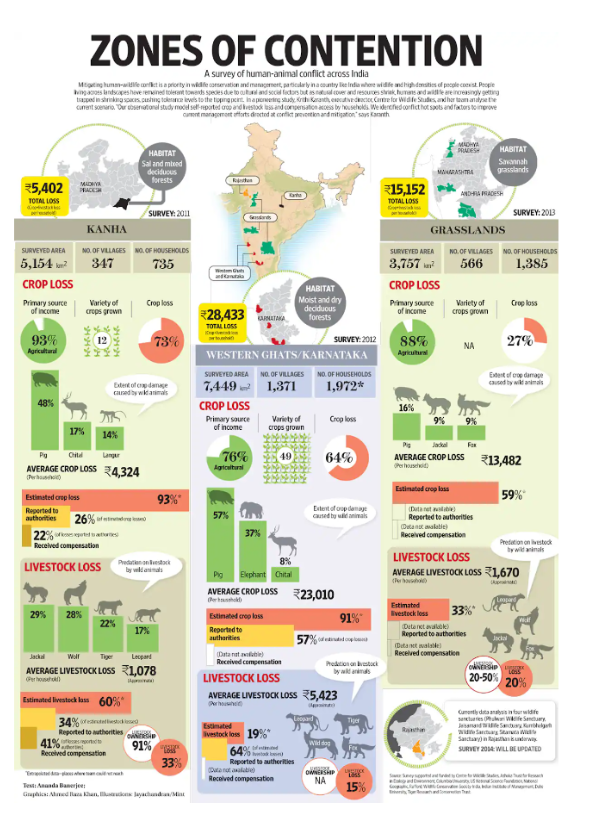
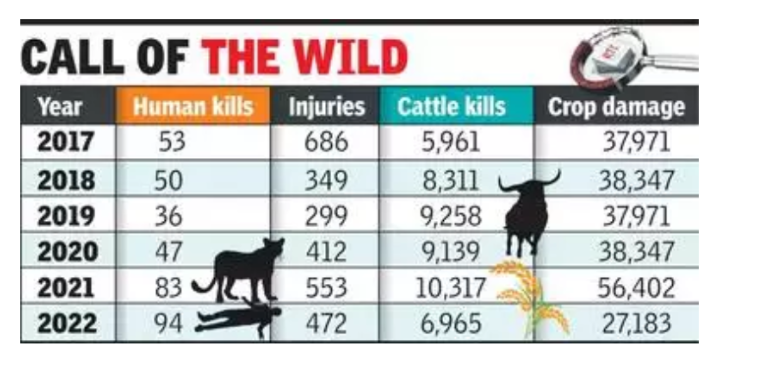
|
CASE STUDY OF MAN HUMAN CONFLICT : HATHI MITRAS IN CHHATTISGARH In September 2018, the Chhattisgarh Elephant project was initiated, focusing on the Mahasamund, Balodabazar, and Raipur districts of Chhattisgarh.The project had four core pillars:
HATHI MITRAS
|
HOW STATES HANDLE HUMAN ANIMAL CONFLICT AS A STATE SPECIFIC DISASTER ?
|
ASPECT |
CURRENT MANAGEMENT |
PROPOSED CHANGE ( STATE SPECIFIC DISASTER ) |
|
Responsibility |
Forest department under the Wildlife Protection Act , 1972. |
State disaster management authority under the Disaster Management Act |
|
District Level Authority |
Chief Wildlife Warden |
State Disaster Management Authority (Chief Minister at State Level) |
|
District Level Authority |
District Collector as the executive magistrate |
District Collector as a Chairperson of District Disaster Management Authority |
|
Intervention Capability |
Limited by Wildlife Protection Act |
Enhanced powers to take decisive actions under Disaster Management Act 2005 |
|
Judicial Oversight |
Decisions may be questioned in court under wildlife laws |
Limited judicial interference due to provisions of Disaster Management Act |
|
Jurisdiction of Courts |
Courts can entertain suits under relevant wildlife laws |
Only the Supreme Court or High Court can entertain suits related to actions under Disaster Management Act, 2025 (Section 71) |
|
Norms Override Capability |
Limited under Wildlife Protection Act |
Authority to override other norms, including wildlife laws, during the declared disaster period (Under Section 72) |
PROBABLE MITIGATION MEASURES OF MAN ANIMAL CONFLICT
- Habitat Restoration and Conservation: By safeguarding and rejuvenating wildlife habitats, the tendency of animals to venture into human areas for sustenance and lodging decreases. The creation of the Mesoamerican Biological Corridor has helped to connect fragmented habitats across Central America.
- Agricultural Safeguards: Employing methods like barriers, deterrent devices, and the introduction of a variety of crops can safeguard agricultural produce from wildlife, thereby diminishing financial setbacks for agriculturists. In the USA, farmers use noise-making devices and reflective tapes to keep birds away from fruit crops, significantly reducing crop damage.
- Advance Alert Mechanisms: The establishment of systems that notify communities of wildlife presence can aid in averting conflicts and safeguard human lives. Wildlife authorities in Canada use an app that alerts users in real-time about wildlife sightings, including bears.
- Community Involvement and Awareness: Enlightening communities on peaceful cohabitation with wildlife, promoting conservation awareness, and training in conflict resolution can enhance mutual respect and patience towards wild fauna. In Australia, the "Living with Wildlife" program educates communities about coexisting with kangaroos and other native species.
- Conflict Management Systems: Instituting mechanisms for resolving wildlife conflicts, such as dedicated response teams or emergency communication services, can lead to swift action and reduce human-animal disputes. The establishment of Rapid Response Teams in Bhutan to deal with human-wildlife conflicts has led to timely interventions.
GOVERNMENT MEASURES TO TACKLE HUMAN ANIMAL CONFLICT
- Wildlife Protection Act of 1972: This act establishes a legal structure for wildlife conservation efforts, including the ban on hunting, the safeguarding and management of wildlife habitats, and the creation of protected zones.
- Biological Diversity Act of 2002: As a signatory to the United Nations Convention on Biological Diversity, India ensures that this act supports existing forest and wildlife legislation to conserve biological diversity.
- National Wildlife Action Plan (2002-2016): This plan aims to bolster the network of protected areas, prioritize the conservation of threatened species and their habitats, regulate wildlife trade, and support initiatives in research, education, and training.
- Project Tiger: Initiated in 1973 as a government-sponsored program, Project Tiger aims to create safe habitats for tigers within the nation's national parks, helping to preserve this endangered species.
- Project Elephant: Launched in February 1992, this centrally sponsored initiative focuses on the conservation of elephants, their habitats, and migration corridors to ensure their protection.
- National Disaster Management Authority (NDMA): The NDMA sets forth guidelines for Central Government ministries and departments to incorporate disaster prevention and mitigation strategies into their development agendas and projects.
CONCLUSION
Managing human-wildlife conflict (HWC) centers on enhancing the safety and cohabitation of people and wildlife. To reduce forest dependency, governments should foster socioeconomic development and provide sustainable livelihood alternatives for communities near forests. Technical and organizational support is essential for incorporating coexistence strategies. Conservation plans should anticipate and mitigate potential conflicts, requiring interdisciplinary approaches for effective resolution. Strategic partnerships among governmental, humanitarian, and conservation entities are vital for synergizing HWC management and risk prevention. Embracing a "One Health" approach acknowledges the interconnected health of humans, animals, and ecosystems. Recognizing HWC as pivotal for sustainable development and wildlife conservation is crucial for achieving harmony with nature by 2050, aligning with the SDGs and the Convention on Biological Diversity's objectives.
Where to use :
Paper II ( Geography Optional ): Man Animal Conflict
DISCOVERY OF A 2.4 MILLION YEAR CLIMATE CYCLE LINKED TO MARS ORBIT
Why in news : A new study has found evidence of erosion in the deep sea linking a 2.4-million-year cycle called “astronomical grand cycles” with the orbits of Earth and Mars, and global warming or cooling.
About :
Key Findings
Recent study unveiled a newly discovered climate fluctuation cycle spanning 2.4 million years. This cycle, rooted in geological sedimentary evidence from the deep sea, is closely connected with the orbit of Mars and has profound implications for understanding Earth's long-term climate patterns.
- Evidence of Erosion and Orbital Interactions : Researchers identified clear signs of erosion in deep-sea sediments, which they link to what they term “astronomical grand cycles.” ( AGC). These cycles are influenced by the gravitational interplay between Earth and Mars as they orbit the Sun. This discovery sheds light on the complex mechanisms driving global warming and cooling phases on Earth.
- Current Warming Cycle : Study indicates that Earth is approximately 200,000 years into a warming phase within AGC cycle, with predictions pointing towards reaching the next peak in about 1 million years.
Contextualizing Astronomical Cycles
- Milankovitch Cycles and Beyond : Over a century ago, Milutin Milankovitch proposed that variations in Earth's orbit and its position relative to the Sun significantly affect the planet's climate.
- The well-established Milankovitch cycles include periods of 19,000, 23,000, 41,000, 100,000, and 400,000 years.
- Deep Ocean Circulation and Climate Impact: Research team examined seafloor erosion, attributing its cause to the strengthening of deep ocean currents driven by orbital forces.
- These currents, influenced by the gravity fields of the solar system's planets, experience resonance, altering their eccentricity and impacting Earth's climate.
- Warmer periods, characterized by higher solar radiation, foster vigorous deep ocean circulation, which could counteract potential stagnation caused by disruptions in the Atlantic Meridional Overturning Circulation (AMOC).
Implications for Oceanic and Atmospheric Dynamics
- Enhanced Deep-Sea Circulation: Study suggests that warmer oceans promote more dynamic eddy-driven circulation. These deep ocean eddies, acting as giant whirlpools, reach the abyssal seafloor and contribute to seafloor erosion and sediment accumulation.
- Such processes are crucial for providing oxygen to deep ocean areas and drawing carbon dioxide from the atmosphere, offering insights into the natural mechanisms that could mitigate climate change effects.
Future Research Directions
- The team plans to gather more data showcasing cycles driven by Earth-Mars interaction, further exploring the dynamics of Earth's climate fluctuations over millions of years.
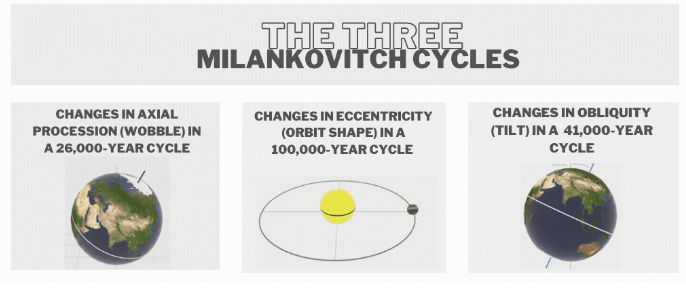
What are the Other Astronomical Influences on Earth's Climate?
- Sunspot Activity: Sunspots, which are cooler, darker areas on the Sun, follow an approximately 11-year cycle of fluctuation. Their varying number and intensity are thought to influence Earth's climate, with more sunspots potentially leading to cooler, wetter conditions and more cloud cover, while fewer sunspots might result in warmer, drier weather. However, these connections are not universally accepted due to a lack of consistent statistical evidence.
- Galactic Cosmic Rays: There is speculation that cosmic rays from the galaxy could affect cloud formation on Earth, possibly causing cooling. The significance and exact processes of this effect are still being explored.
- Asteroid/Comet Impacts: Although rare, significant impacts by asteroids or comets can disrupt Earth's climate by releasing large amounts of dust and gases into the atmosphere, leading to short-term cooling. An example is the impact believed to have contributed to the dinosaur extinction 66 million years ago, which caused drastic climate changes.Source :
Where to use :
Paper I ( Geography Optional ) : Climatology
WORLD AIR QUALITY REPORT 2023
Why in news : India has been ranked as the third-most polluted country in 2023, following Bangladesh and Pakistan, according to the ‘World Air Quality Report 2023’ by IQAir.
About :
Key Highlights
Most Polluted Indian Cities:
Key Highlights
- India is home to ten of the top eleven cities with the highest pollution levels globally, with Lahore, Pakistan, being the exception.
- In 2023, the PM 2.5 levels in Begusarai, Bihar, surged from 19.7 to 118.9 micrograms per cubic meter compared to 2022.
- The PM2.5 levels in Guwahati escalated from 51 to 105.4 micrograms per cubic meter from 2022 to 2023.
- Delhi experienced a rise in PM2.5 levels from 89.1 to 92.7 micrograms per cubic meter during the same timeframe.
- The list of the world's top 50 most polluted cities also includes Greater Noida (11), Muzzafarnagar (16), Gurgaon (17), Arrah (18), Dadri (19), Patna (20), Faridabad (25), Noida (26), Meerut (28), Ghaziabad (35), and Rohtak (47) from India.
Global Insights:
- In 2023, the region of Oceania, which includes Australia, New Zealand, and French Polynesia, maintained the lowest pollution levels.
- The report identifies the five countries with the highest pollution levels as Bangladesh, Pakistan, India, Tajikistan, and Burkina Faso.
- Countries achieving the WHO's annual PM2.5 guideline of 5 µg/m3 or lower include Australia, Estonia, Finland, Grenada, Iceland, Mauritius, and New Zealand.
- China saw a 6.3% increase in PM2.5 levels in 2023, marking a shift towards higher pollution levels.
- Canada was noted as the most polluted country in Northern America for the first time, indicating challenges in regional air quality.
- Africa is the least represented continent in terms of air quality data, with one-third of its population not having access to such information.
What Is Particulate Matter ?
- Particulate matter (PM) is composed of a complex mix of tiny solid and liquid particles that are suspended in the air.
- These particles originate from various sources, such as emissions from vehicles, activities in industries and construction sites, farming practices, wildfires, and natural sources like dust.
- Depending on their aerodynamic diameter, PM can be categorized into different groups.
- Significant categories include PM10 (particles that are 10 micrometers in diameter or less) and PM2.5 (particles that are 2.5 micrometers in diameter or less).
- PM2.5 particles are extremely small, allowing them to deeply penetrate the respiratory tract and even enter the bloodstream, thereby posing serious health threats.
- Continuous exposure to high levels of PM2.5 is associated with decreased lung functionality, exacerbation of asthma symptoms, and a heightened risk of experiencing heart attacks and strokes.
Comparative Analysis
- Previous Rankings: In 2022, India held the eighth position among the most polluted countries with an average PM2.5 concentration of 53.3 micrograms per cubic meter, demonstrating a marginal increase in pollution levels.
- Global Rankings: The report ranked 42 Indian cities among the top 50 most polluted cities globally, with Begusarai, Guwahati, and Delhi leading the list.
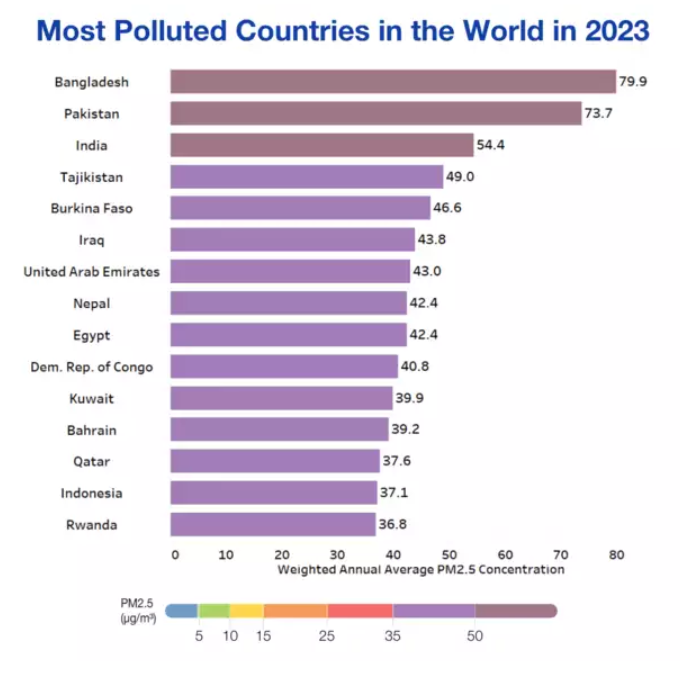
Source :
Where to use ?
Paper I ( Geography optional ) : Environmental Geography
Paper III ( General Studies ) : Air pollution
High Seas
High Seas : The high seas are defined by international law as all parts of the ocean that aren’t included in the exclusive economic zone, the territorial sea, the internal waters of a country, or the archipelagic waters of an archipelagic country. The high seas are some of the most biologically productive in the world – teeming with plankton and home to ocean giants like predatory fish, whales, and sharks.
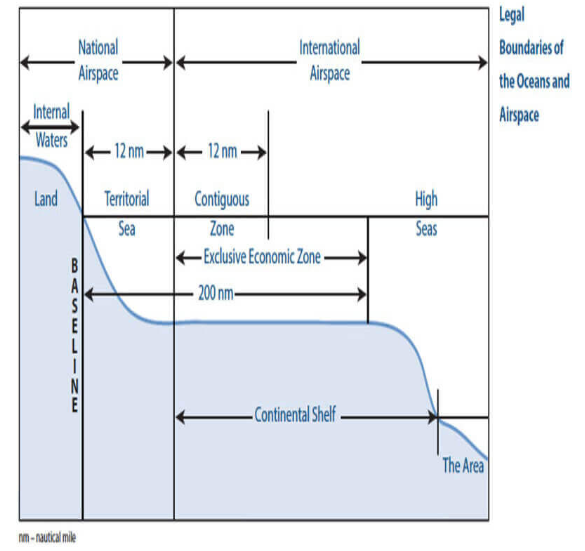
Parasitoid
Parasitoid : Parasitoids are small insects whose immature stages develop either within or attached to the outside of other insects, referred to as hosts. Parasitoids eventually kill the host they feed on, as opposed to parasites like fleas and ticks, which typically feed upon hosts without killing them.
Sacred Groves
Sacred Groves : Sacred groves are woodlands collectively safeguarded by communities, typically holding profound religious significance for the responsible community. Also known as sacred forests, these groves consist of natural vegetation preserved by local communities based on religious convictions and traditional rituals.
Latitudinal Diversity Gradient
Latitudinal Diversity Gradient : The latitudinal biodiversity gradient refers to the pattern of increasing species richness (number of species) from the poles to the equator. This gradient has been observed across various taxa, including plants, animals, and microorganisms, and it holds true for both terrestrial and marine ecosystems.
Biofilm reactor
Biofilm reactor : Biofilm reactors are used in wastewater treatment plants to remove organic carbon, nutrients, pathogens, and odor. They are often used in combination with activated sludge treatment or oxidation ponds.
IMPACT OF BRICK KILN EMISSIONS ON SOIL QUALITY OF BANGLADESH ( ANSHULIA BRICK KILN CLUSTER )
- There are more than 7000 active brick kilns in Bangladesh to meet the country's growing demand for building materials. Urban air pollution has become a great concern in this region due to the stack emissions during the brick manufacturing period.
- However, study has also assessed the effect of heavy metals released from brick kiln emissions during their production period on the adjacent soil environment of the region.
- The concentration level of cadmium resulted to be very high than its threshold limit in the majority of the sampling locations. Study findings indicate prospective damage to the studied soil environment and ecological settings of Ashulia, due to the emissions from the brick kilns which require suggested emission control and soil remediation actions, and implementation of eco-brick manufacturing technologies without further delay.
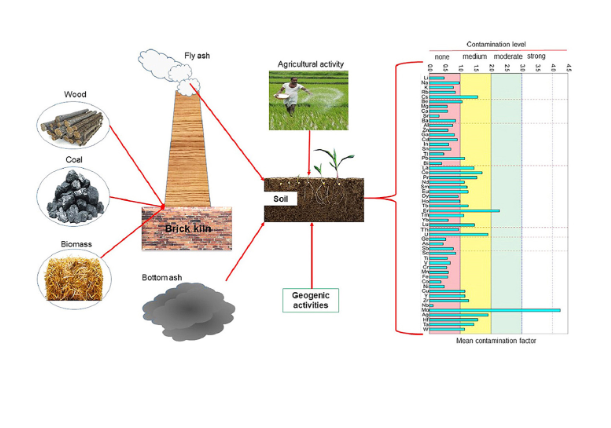
Where to use ?
Paper I ( Geography optional ) : Soil erosion and degradation , Influence of man on ecology
Source :
https://www.sciencedirect.com/science/article/pii/S2667010022001962
Places in the news
1. Kuno National Park
Why in news : Recently, the Madhya Pradesh CM said that more cheetahs would be introduced to the Kuno Palpur National Park soon.
- It lies in Sheopur district of Madhya Pradesh in Central India near the Vindhyan Hills.
- Named after the Kuno River (One of the main tributaries of the Chambal River) that cuts across it, Kuno is primarily a grassland region.
- Kuno National Park was selected under ‘Action Plan for Introduction of Cheetah in India’.
- Approx : Sheopur
2. Sasvad
Why in news : Sasvad in Maharashtra earned the cleanest city title among those with a population below 1 lakh.
- Saswad is situated on the banks of the Karha River in the Pune district of Maharashtra .
- It is one of the trade route and center for Buddhist monasteries.
- It is called as land of Brave and Intellectual People. Sasvad gets legacy from Chatrapati Shivaji Maharaj , Founder of Maratha Empire.
- Approx : Pune
3. Koderma
Why in news : Recently, a ‘Vulture restaurant’ has been set up in Koderma district, Jharkhand to conserve the vulture species.
- Koderma is a city and a notified area in the Koderma subdivision of the Koderma district in the Indian state of Jharkhand.
- Koderma is a part of Chotanagpur Plateau .
- Koderma district also has a sanctuary namely Koderma Wildlife Sanctuary which comes under the jurisdiction of Hazaribagh Wildlife Division
- Approx : Hazaribagh
4. Willingdon island
Why in news : Port unions urge PM to help revive activities on Willingdon Island
- Willingdon Island is a seaport located in the city of Kochi, Kerala.
- It is the largest man-made/artificial island of India and is surrounded by backwaters (a part of a river in which there is little or no current).
- It was carved out of Vembanad Lake and is connected via road and rail. The island is connected to the mainland by the Venduruthy Bridge.
- Approx : Kochi
5. Wadge Bank
Why in news : Wadge Bank faces a potential threat as the Indian government considers offering three oil and gas blocks for exploration and development.
- It is a 10,000 square kilometers area, located approximately 50 kilometers south of Kanyakumari.
- It features shallow waters, a nearly flat bottom topography, and a continental shelf.
- The low intensity of currents, waves, and tides makes it an ideal location for the accumulation of nutrients and fish food.
- Approx : Kanyakumari

Fortnightly KOSMOS MCQs Practice
Q1. Select the incorrect answer from the following statements regarding Vaitarna River ?
- This river has its sources in the Brahmagiri Hills located within the Western Ghats.
- The Tanya River contributes to it as a tributary on the left bank.
- It stands as the most significant river traversing the Northern Konkan region
- It is characterized as one of the rivers that flow towards the west.
Q2. With reference to the Bull Shark, which of the following statements are correct?
- This species is widely distributed across the globe in warm, shallow waters.
- It has the capability to live in both saline and freshwater environments.
- It is often referred to as freshwater sharks.
- They have been listed as Vulnerable on the IUCN Red List of Threatened Species.
Select the correct answer using the codes given below:
- 1 and 4 only
- 2, 3 and 4 only
- 1, 2 and 4 only
- 2 and 3 only
Q3. Consider the following statements:
- This plant thrives in consistently warm conditions, with temperatures ranging from 20° to 35°C throughout the year.
- It necessitates substantial precipitation, approximately 200 cm.
- For optimal growth, soils should be deep, crumbly, and have good drainage.
Which one of the following crops requires the above climatic conditions?
- Millets
- Pulses
- Rubber
- Wheat
Q4. Select the correct statements about Rip currents :
- Powerful ocean currents that move outward from the coastline.
- Intense currents that run along the coast, parallel to the shore.
- Gentle currents that carry and leave sand on the shorelines.
- Submerged channels created through the erosion by waves.
Q5. Consider the following statements about Harit Nauka initiative:
- The aim is to cut down on greenhouse gas emissions, following the Maritime Amrit Kaal Vision 2047.
- Under the guidelines of the Harit Nauka initiative, all states are required to transition to green fuels for half of their passenger fleets operating on inland waterways within the next decade, and achieve 100% green fuel usage by 2045.
Which of the above mentioned statements is / are correct ?
- Only 1
- Only 2
- Both 1 and 2
- Neither 1 nor 2
Q6. With reference to the Report on the Status of Leopards in India 2022, consider the following statements:
- There was an 8% decrease in the leopard population in India from 2018 to 2022.
- Madhya Pradesh boasts the largest leopard population, with Maharashtra, Karnataka, and Tamil Nadu following.
- In the Shivalik landscape, over fifty percent of leopards reside outside designated protected areas.
How many of the above statements are correct?
- Only One
- Only two
- All three
- None
Q7. Consider the following tribes:
- Shompen
- Onges
- Todas
- Sentinelese
How many of the tribes mentioned above are indigenous to the Andaman and Nicobar Islands?
- Only one
- Only two
- All three
- None
Q8. Consider the following statements regaridng Pigeon pea (Tur):
- This plant thrives in soils ranging from loamy to sandy that have good drainage.
- Cool and temperate climate accompanied by regular rainfall provides the best conditions for growing pigeon pea.
- In India, pigeon pea is intercropped in approximately 80-90% of its cultivation.
How many of the statements given above are correct?
- Only one
- Only two
- All three
- None
Q9. Which one of the following statements is correct regarding the term “Solar Maximum”?
- This phenomenon involves an abrupt, powerful surge of energy on the Sun's surface, frequently resulting in the emission of electromagnetic radiation across the full spectrum.
- A steady flow of charged particles, primarily electrons and protons, emanates from the Sun, extending throughout the solar system.
- This term describes the phase in the solar cycle where solar activity peaks, marked by a rise in sunspots, solar flares, and coronal mass ejections (CMEs).
- It represents a large-scale release of plasma and magnetic fields from the Sun's corona into outer space.
Q10. The Unjust Climate Report was released by which of the following:
- Food and Agriculture Organisation (FAO)
- Intergovernmental Panel on Climate Change (IPCC)
- World Bank
- United Nations Environment Programme (UNEP)
Q11. Kiru Hydel Project is developed among which of the following rivers :
- Godavari
- Narmada
- Chenab
- Kaveri
Q12. Consider the following statements with respect to ‘Cavum Clouds’:
- Cavum clouds occur when airplanes intersect with mid-level altocumulus clouds laden with supercooled liquid water droplets.
- The disturbance caused by the aircraft in the vicinity of Altocumulus Clouds leads to the droplets solidifying into ice crystals, which then grow dense and descend from the clouds, creating gaps within the cloud layer.
- The INSAT 3D satellite, operated by ISRO, documented this occurrence.
How many of the above statements are not correct?
- Only one
- Only Two
- All three
- None
Q13. Consider the following statements:
Statement-I: The boundary separating Israel and Jordan is referred to as the Blue Line.
Statement-II: The United Nations established the Blue Line in 2000 following the withdrawal of Israeli forces from southern Lebanon.
Which one of the following is correct in respect of the above statements?
- Both Statement-I and Statement-II are correct, and Statement-II is the correct explanation for Statement-I.
- Both Statement-I and Statement-II are correct, and Statement-II is not the correct explanation for Statement-I.
- Statement-I is correct, but Statement-II is incorrect.
- Statement-I is incorrect, but Statement-II is correct.
Q14. Consider the following statements regarding Cantor’s Giant Softshell Turtle :
- These turtles inhabit regions of Southeast Asia, encompassing areas within India.
- Primarily, these turtles have a carnivorous diet.
- They are classified as Critically Endangered on the IUCN Red List of Threatened Species.
Which of the statements given above are correct?
- 1 and 2 only
- 2 and 3 only
- 1 and 3 only
- 1, 2 and 3
Q15. Libya is bordered by which of the following countries:
- Egypt
- Sudan
- Tunisia
- Niger
- Algeria
Select the correct answer using the code given below:
- 1 and 2 only
- 2 and 3 only
- 1,3,4 and 5
- 1, 2, 3, 4 and 5
Share the article
Edukemy’s Current Affairs Quiz is published with multiple choice questions for UPSC exams
MCQ
Get Latest Updates on Offers, Event dates, and free Mentorship sessions.

Get in touch with our Expert Academic Counsellors 👋
FAQs
Geography Current Affairs focuses on the contemporary issues, events, and developments in the field of geography. It covers recent geographical phenomena, environmental changes, geopolitical shifts, and related news. This differs from regular geography studies which may focus more on foundational concepts, historical contexts, and theoretical frameworks.
Updates are provided regularly to ensure that subscribers stay informed about the latest developments in geography. Typically, updates are provided on a fortnightly basis, depending on the frequency of significant events and changes in the field.
Absolutely. Geography Current Affairs serves as a valuable resource not only for Geography optional but also for GS papers, especially GS Paper 1 (covering Indian Heritage and Culture, History, and Geography of the World and Society) and GS Paper 3 (covering Technology, Economic Development, Biodiversity, Environment, Security, and Disaster Management). It aids in building a holistic understanding of various topics and strengthens answer-writing skills by incorporating contemporary examples and perspectives.
Geography Current Affairs holds immense importance for UPSC preparation, particularly for aspirants opting for Geography optional. It helps candidates stay updated with the latest developments, geographical phenomena, environmental issues, and geopolitical shifts worldwide, aligning them with the dynamic nature of the subject as tested in the UPSC examinations.

